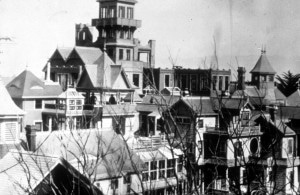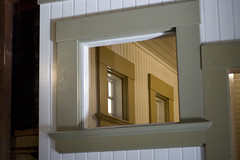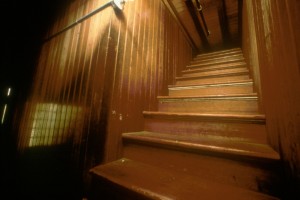My first novel was inspired by a dream, written longhand, and typed up. I rearranged the elements of one chapter (making it a pretty cool partial flashback)—and that passed for editing. Naturally, when editing doesn’t take any time, I figured it I should start on my next novel as soon as I finished this one.
As any writer can tell you, ideas are cheap. I come across several every day. But very few of them actually inspire novels (it usually takes combining a few ideas to get to that level). As I approached the end of my first novel, I began to worry about the next one. Would I have any ideas? Did I only have one novel in me?
I think that insecurity comes back with every novel and every fallow period. I put immense pressure on myself to be “productive.” I’m almost always multitasking, even on a day “off.” But it’s okay to wait until you find an idea you’re really passionate about.
Fortunately, I had another dream, and once again I had the seeds of a novel.
The book stats
Title: Finally settled on Con Artist
Genre: Semi-historical romance (set in New York in 1974)
Inspiration: another dream
Writing dates: November 2007 – about August 2008. Well, the actual writing didn’t take all that time, but I’m not sure when I finished writing. I stopped editing in about August 2008, soon after my second child was born.
Length: ~70,000 words?
Elevator pitch: Aspiring artist Margaux might be living with a killer. The only person who can help her is Charlie, a handsome reporter—and the one person who could ruin Margaux’s future.
What I learned from writing this book
Uh, wow. I learned a lot from this book. In the course of writing, I was thinking about one character’s backstory, and it just popped into my head: he was divorced, and here’s why, and here’s his ex-wife, and here’s his son. That kind of “speaking” to me is still kind of rare, so it’s still one of my favorite moments about this book.

This manuscript was also a big lesson for me in revision. I really didn’t like how the last third of the book or so ended, so I really began pulling it apart, tackling the events differently, rewriting and changing. Unfortunately, I never did get it to where I liked it okay.
This novel also brought me to my first critique group, which happened to be online. It was a very interesting setup, and it seemed to work well (though I moved on years ago, so I can’t really comment on how it’s working now). I made a good friend (hi, Marnee!) there, and learned a lot about characterization, motivations, character sympathy, etc. But that group also yielded my first experience with a toxic critique partner (not Marnee!).
Possibly the biggest effect this book had on my writing, though, was realizing that I needed to plot things out first. This book began to grow into a Winchester Mystery Story as I fixed problems pointed out by critique partners, while also rewriting and scrapping and revising and rewriting the last third of the book. Finally, I really couldn’t fix this, and I was beginning to hate the characters, the book, and writing.
Also, having just recently had a baby about the time I was drowning in edits, I was worried I would never be able to write a novel again. Fortunately, I proved myself wrong. (Next time!)
How about you? Are you a “convert” to plotting? Come share!
Photo credits: idea (lightbulb)—Juliette;
re-envision original series by Briana Zimmers via Flickr/CC





